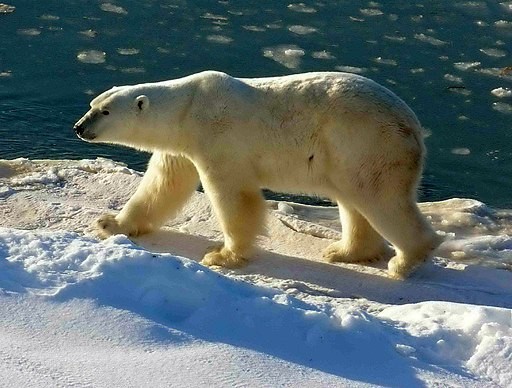Climate change has been a threat to the survival of polar bears. Now these species face a new deadly challenge as more mammals are affected by the spread of a deadly viral disease.

An Unseen Predator
In October 2023, a North Slope polar bear was found dead near Utqiagvik City, the northernmost community in Alaska. It is reported as the first of the species to have been killed by the highly pathogenic avian influenza which currently circulates among animal populations around the world.
The virus was discovered in the bear's body tissue through sampling and study by the North Slope Borough Department of Wildlife Management and other agencies. By December 6, the Alaska Department of Environmental Conservation had confirmed that the death of the animal was indeed caused by avian flu. The case was reported to the World Organization for Animal Health, and has gotten attention in other nations with polar bears.
The North Slope polar bears are the first animal in Alaska listed in the Endangered Species Act to fall victim to the disease. These mammals were listed as threatened in 2008 since they depend on sea ice that is diminishing from climate change.
Polar bears normally obtain their food by hunting seals from the sea ice. According to Alaska's state veterinarian Dr. Bob Gerlach, this bear appears to be scavenging on dead birds, which led to the ingestion of the influenza virus. The death of numerous species of birds on the North Slope due to avian influenza has been confirmed by the Department of Environmental Conservation.
Gerlach also noted that polar bears do not need to directly eat an infected bird in order to become sick. If a bird dies from flu infection, the virus can be maintained for a while especially if its body is kept in a cold environment.
The death of this polar bear is a sign of the unusually persistent and lethal threat of H5N1 to wild animal populations two years after it arrived in the North American region. According to the U.S. Geological Survey wildlife geneticist and avian influenza expert Andy Ramey, what we are currently dealing with is a scenario which has not been dealt with in the past, so there is no reference or guide.
A New Emerging Threat
The H5N1 strain is called highly pathogenic avian influenza because it rapidly spreads in flocks of domestic poultry and often requires massive culls to control the contagions. A prior outbreak happened in the U.S. in 2014-2015, followed by influenza-caused bird die-off in Europe. These cases brought economic consequences for global agriculture.
Until recently, wild birds were afterthoughts because the majority of them are unaffected even if they carry the viruses between domestic poultry populations. However, the current version of avian flu is considered unprecedented in its impact on wild birds and other wildlife.
According to Ramey, tens of thousands of wild birds these days are dying because of the highly pathogenic avian influenza viruses. Instead of winding down, it continues to spread across the world, even into bird populations in Antarctica. The avian flu-related deaths are of particular concern when they occur in populations which are already vulnerable.
H5N1 has also killed a variety of mammals around the world, so the polar bear case was not surprising. In Alaska, a black bear, a brown bear, and three foxes have died from this disease. Gerlach believes that more polar bears could succumb to the disease, but in remote places out of the view of humans to record the events.
RELATED ARTICLE: Will Bird Flu Be the Next Pandemic? Experts Say the World Is Not Yet Ready for Another Disease Outbreak
Check out more news and information on H5N1 in Science Times.



![Earth's Quasi-Moon Kamo‘oalewa Could Originate From Lunar Surface Not Asteroid Belt [Study]](https://1721181113.rsc.cdn77.org/data/thumbs/full/53275/89/56/50/40/earths-quasi-moon-kamo-oalewa-could-originate-from-lunar-surface-not-asteroid-belt-study.png)










